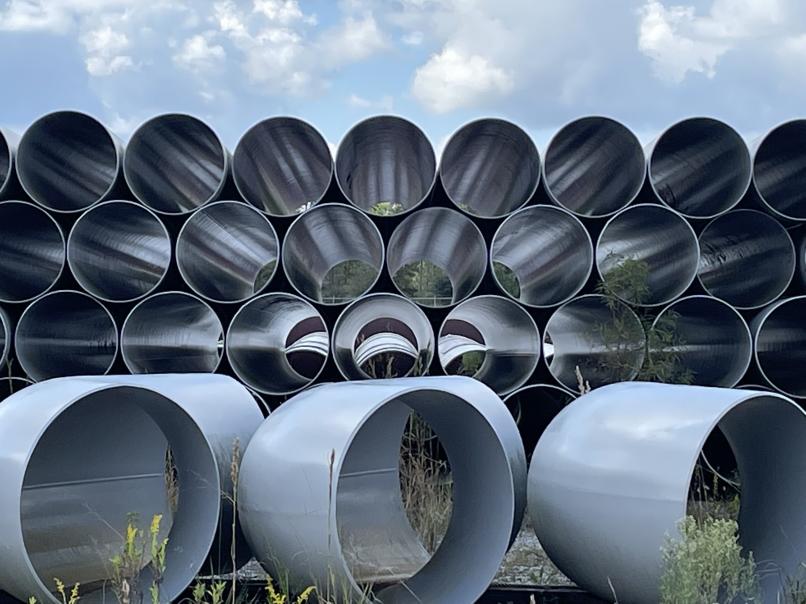Foundations Built to Last: The Role of Piling Pipes in Construction
Strong foundations are essential for ensuring the stability and durability of structures in construction. Piling pipes, integral to foundation systems, serve critical roles in applications like support and friction piles. When used as support piles, they are driven into firm support layers, utilizing the full strength of steel to bear loads effectively. This capability is especially advantageous in deep soft soil foundations deeper than 30 meters, allowing steel pipe piles to access solid support layers and maximize bearing capacity. Versatile and durable, these piles are indispensable in modern construction, offering dependable support across a range of projects.

Understanding Piling Pipes
Definition and Purpose
Piling pipes are cylindrical steel or composite tubes crucial in construction for supporting and stabilizing foundations. These pipes are driven deep into the ground to reach solid layers, ensuring the stability and durability of structures. Their primary role lies in providing a secure foundation, essential for safeguarding buildings and infrastructure against structural failures over time.
Types of Piling Pipes
Piling pipes come in various types, each tailored to specific construction needs:
- Concrete-filled steel pipes: Combining the strength of steel with concrete's compressive resistance, ideal for heavy load-bearing applications.
- Steel pipes: Known for their high strength and flexibility, widely used across different foundation projects.
- Composite pipes: Made from multiple materials, offering enhanced durability and adaptability to diverse environmental conditions.
Features of Cangzhou Shenlong Pipe Pile
Cangzhou Shenlong pipe piles offer distinctive features that enhance their utility in construction:
- Large Vertical-Bearing Capacity: Driven into firm bearing layers, these piles support heavy loads, ensuring structural integrity.
- High Bending Strength: With superior stiffness, they withstand significant horizontal forces, providing added safety during seismic events.
- Excellent Environmental Performance: Minimal section areas reduce earth removal and diminish vibration and noise during installation, making them environmentally friendly.
- Custom Fit for Each Structure: Available in various lengths, diameters, and thicknesses, they enable cost-effective designs tailored to specific structural requirements.
- Easy Production of Longer Piles and Jointing: Capable of manufacturing longer piles and easy welding for jointing, suitable for deep water and underground structures.
- Easy Jointing with Superstructures: Simplified connection to upper concrete structures using reinforcing steel bars at the pile tops ensures secure and stable integration.
- Easy Handling: Designed for straightforward transportation and installation on construction sites, enhancing overall efficiency.
The Role of Piling Pipes in Construction
Load Bearing and Transfer
Piling pipes play a critical role in bearing and transferring structural loads to deeper, more stable soil layers. This capability is essential for maintaining the structural integrity of buildings, particularly in regions with varying soil conditions. Their high load-bearing capacity ensures structures remain stable and secure, regardless of surface soil characteristics.
Foundation Stability
Ensuring foundation stability is paramount in construction, especially in soft or unstable soil conditions. Piling pipes prevent settlement and subsidence by transferring loads to deeper, stable layers. This foundational stability is crucial for preventing structural damage and extending the lifespan of buildings. By providing a solid base, piling pipes mitigate risks associated with soil movement and environmental factors, ensuring long-term structural reliability.

Applications
Application of Steel Pipe Pile
Steel pipe piles serve diverse roles in construction projects:
- 1.Bridge Foundations: Essential for building stable foundations capable of withstanding heavy loads and environmental challenges, ensuring long-term bridge integrity.
- 2.Building Foundations: Crucial in creating deep, secure foundations for high-rise buildings and large structures, maintaining stability under varying loads
- 3.Harbor Structures: Indispensable for constructing durable harbor facilities like piers and docks, withstanding marine conditions and heavy structural demands.
- 4.River Structures: Vital for river projects such as dams and levees, providing robust support against water force and erosion, safeguarding structural integrity.
- 5.Others (Landslide Prevention Piles, etc.): Used in diverse applications including preventing landslides by anchoring unstable slopes, protecting infrastructure and landscapes.
Installation Techniques and Considerations
Installation Methods
Piling pipes are installed using two primary methods, chosen based on project needs and site conditions:
- 1.Driving Piles: Utilizes a pile driver to hammer piles into the ground through soil, sand, or rock. Efficient for rapid installation in challenging terrains, ideal for bridges and buildings.
- 2.Drilling Piles: Involves drilling steel piling pipes underground, with methods like end bearing, friction, and compaction piles. Ensures stable foundations, particularly beneficial in complex soil conditions and water-sensitive environments.
Environmental and Site-Specific Considerations
- 1.Environmental Impact Assessments: Crucial before installation to evaluate ecological impacts on local ecosystems, water tables, and soil quality, ensuring minimal environmental disruption.
- 2.Adaptation to Varying Geological Conditions: Tailors installation techniques to specific site geology—adjusting for soil types, rock formations, and groundwater levels—to enhance stability and structural integrity.
Maintenance and Longevity
Ensuring Long-Term Stability
- 1.Routine Inspection and Maintenance Practices: Regular checks for corrosion, structural integrity, and operational issues maintain piling pipe stability over time, ensuring continued reliability.
- 2.Factors Affecting the Lifespan of Piling Pipes: Longevity influenced by material quality, environmental exposure, and installation precision. Proper practices extend service life, preserving effectiveness and safety for construction projects.
In Closing
Piling pipes play a crucial role in modern construction, offering strong and dependable support across a range of projects including bridges, buildings, and maritime structures. Their capacity to handle substantial loads, adjust to diverse geological conditions, and uphold environmental standards positions them as essential in foundation engineering. Through meticulous installation and ongoing upkeep, piling pipes guarantee the durability and reliability of structures, protecting against environmental pressures and structural risks. As construction methodologies advance, piling pipes remain integral to constructing enduring foundations that endure over generations.






